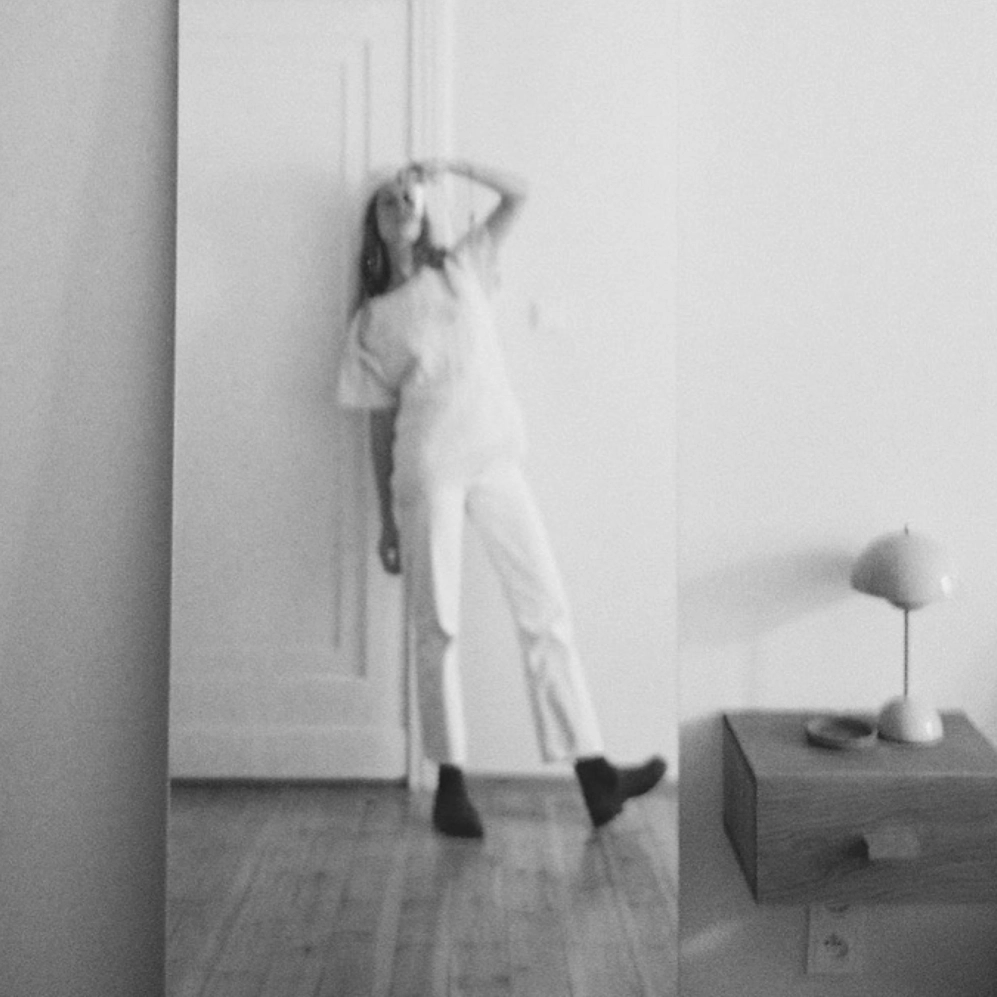
Words Vidula KotianDate 05 December 2023
Yet, her careful spatial compositions of Zen organic shapes in natural materials and their delicate scent (mostly sweet lanolin) draw you in inviting further contemplation and touch. The Polish artist was a successful architect for many years before finally taking the plunge to create something with her hands.
What started as a simple exploration of materials—wool yarn being the first—with a punch needle (a technique invented in the 19th century in the U.S.) has turned into an exploration of the boundaries between textile and sculpture through inventive technique. “My moves have become bolder and more dynamic over time,” explains Owsiany. “Woven shapes now look almost as if they’ve been carved. I gave up carefully prepared cutouts where I traced the shapes with the needle. Instead, I’m more spontaneous now and listen to the material, letting it guide my hand in creating what it wants to become.”
As the Poznań native is coming into her own—she’s represented by galleries, such as Objets Inanimés in Marseille—so have the invitations to do artist residencies, including at the Albers Foundation, in the U.S., in spring next year. We chatted with her about her journey as an artist, what it means to engage with natural materials (and suppliers) today, and what keeps her going.

Untitled in Jute 2023 hanging in the artist's home
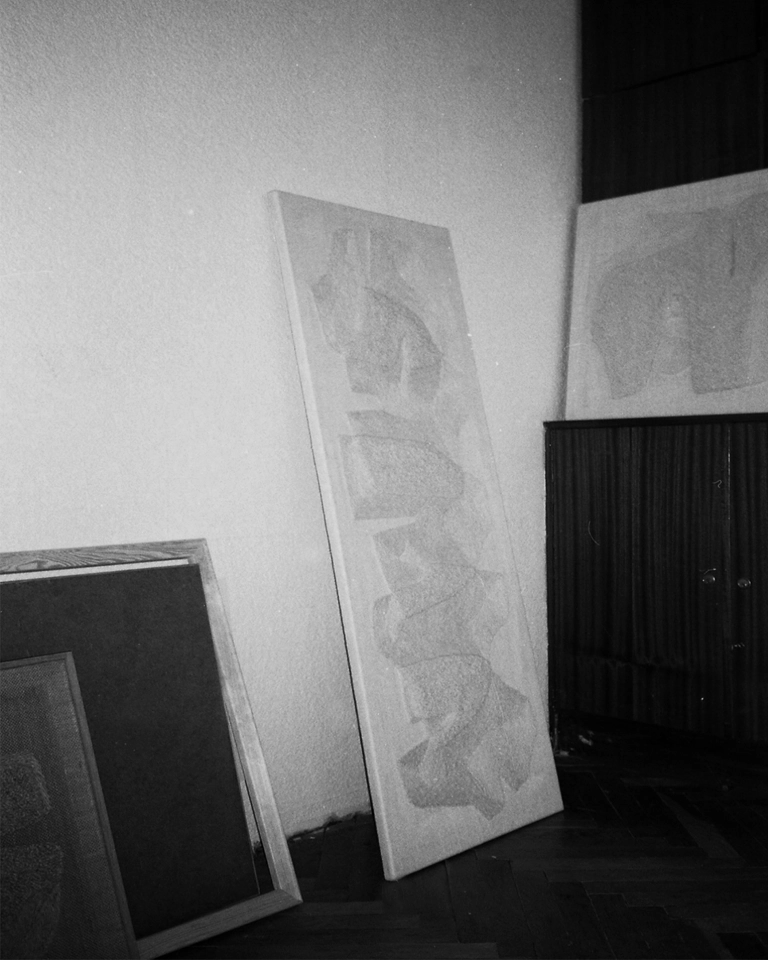
Woolscape series 2022 in the artist's studio
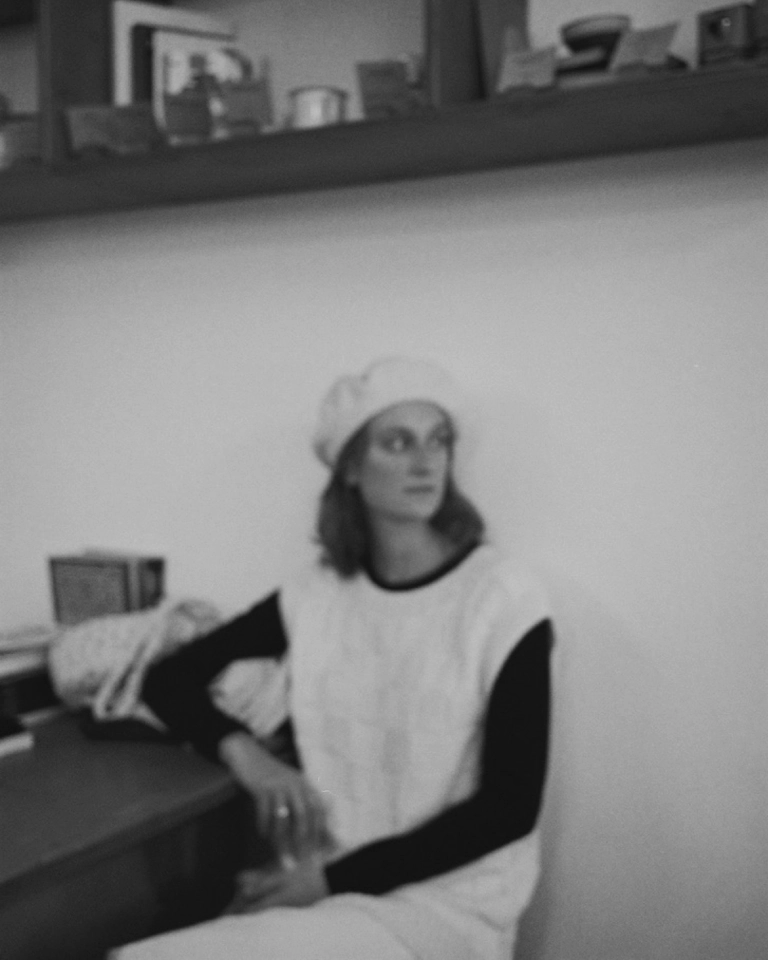
Portrait of the artist

Woolscape no. 22, 2023 explores sculptural elements
I have a master’s in architecture and urbanism and worked in this field for several years before committing to art. I consider myself an artist with a strong architecture bond, but now it’s just on a different level.
I believe it’s about the complex way of perceiving textiles. You grasp them through so many different senses. There’s obviously a visual layer but also there’s a tactility to fabrics that comes very naturally to us. We’re not necessarily used to touching stones or metal whereas we’re in constant contact with fabrics as we wear them and use them daily in many situations. Then there is the smell of the material which is a pretty strong feature of my pieces. It’s the sweetness of lanolin from wool yarn but also the raw and earthy scent of jute, which you can notice immediately once you enter a room where my work is hanging.
The process of thinking about the form, composition, and proportions when designing textiles is similar to architecture. The biggest difference is that with textiles, there is no one else involved in the process. I feel very close to the material as I work with my own hands. I’m present in every step of the process. That’s what I missed when I was working in architecture. This is what most of us miss in this digital world and why craft has become so popular both in terms of making something but also on the market. The kind of traces that the body “leaves” on the created pieces cannot be imitated in production.

Sheep flock from Navarra in northern Spain

Untitled in Jute, 2023 showcases the artist's penchant for using material as color

Vintage upholstery linen from an antique store in Provence
I make my tapestries with a punch needle—a basic DIY technique that housewives used to create decorative objects back in the 19th century. Since the tool I’m using was invented in the U.S., I didn’t feel connected to it so I’ve decided that the materials I use will set my pieces in a local and unique context. It has become my field of exploration.
Speaking of wool, I wanted to find material that was local, but I was also looking for a producer who would share my values in terms of animal welfare and environmental care. I spent all my childhood holidays in the Tatra Mountains where sheep were grazing on every single field so naturally, I started there. Sadly, I discovered that things have changed dramatically over the years and that the endemic species have become endangered. Since the sheep in this area have thick and harsh wool, undesired in the textile industry, they are bred for meat and dairy.
I was lucky to find Maria, a small-scale producer from the Beskidy Mountains who has only two flocks. Producing wool yarn is a rather complex process for Maria as she must collaborate with several other people to have the fleece combed, washed, and spun in a mill. You have to be really passionate to keep going, especially when the income is rather symbolic.
We’ve been working together for over two years now. When I learnt how complicated it is to produce yarn, I started working with raw fleece which is very primal and doesn’t require so many steps in production. I became fascinated with it. I am still testing the material but I’m getting to the final stages of creating fleece textiles that will become part of my new series of domestic objects.

The creative process on display
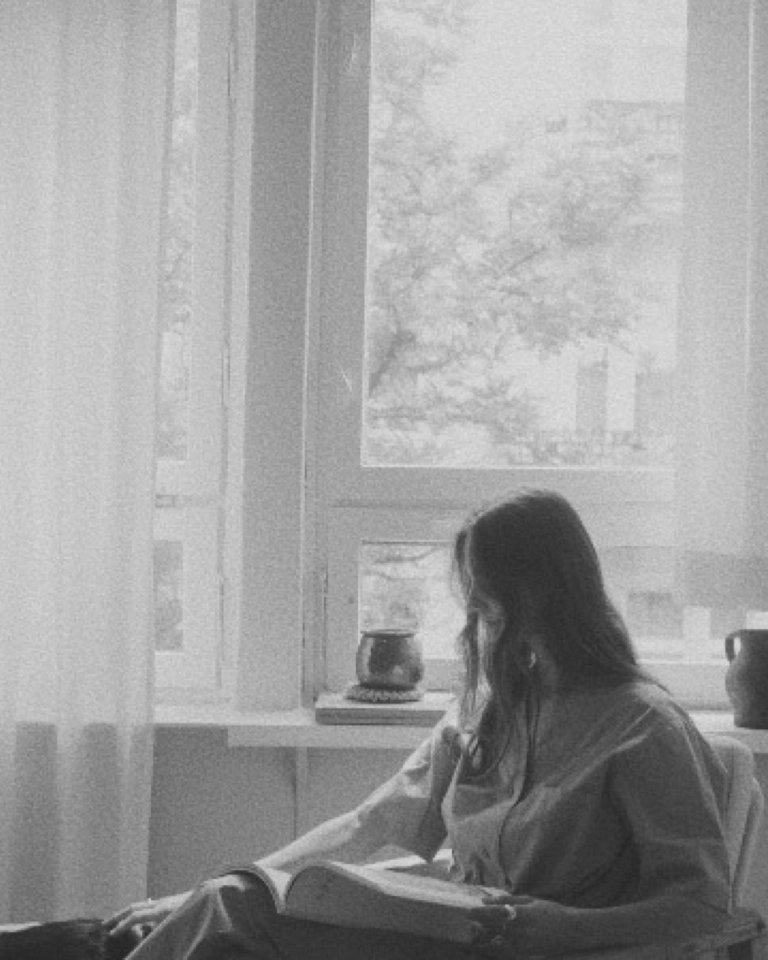
Agnieszka Owsiany

Commissioned work from the Woolscapes series

Testing how light affects a linen piece at home
It was my first complex creation in terms of combining technique, but also with my personal language that I have developed over the last years.
It’s still changing! I’m going through some major changes at the moment. After you do something repetitively for a few years, you start looking for change because you simply get bored or burned out. When I was creating Woolscapes, it was about minimalism and the material was very precious to me. I was already working with Maria back then. I wanted to showcase the material in the most beautiful and natural way. I also developed this technique to create different heights within the tapestries. I guess there was a lot of architectural thinking in how I considered shapes, forms, and proportions.
Now, I’m exploring other materials, such as jute and linen. What hasn’t changed is the way I treat color in my pieces, following my principle of using material as a color. What is exciting to me about the jute pieces is that it feels like sculpting in a way. I add layers and change them. It’s a more spontaneous process when compared to the Woolscape series, which were based on sketches and a precise process. With the jute pieces, I’m bolder and more spontaneous and I create works as I see them. I’m getting a lot of joy from this process, which tells me that this is the right thing to do.
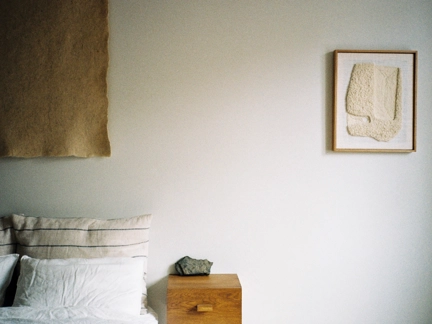
Felt and hand tufted pieces created from Polish mountain wool
Lately my home has become an extension of my studio so usually I have my own pieces there. Some of them are waiting to be collected, others I’m testing to see how they react to light and humidity.
I prefer collecting objects, such as unique vintage pieces of furniture and ceramics. I visit every possible flea market wherever I go as well as food markets, which is my other major passion. I also love picking up pieces of wood or stone when I’m walking in the woods. They are pieces of art in their own right.
I try to take a break quite often, so I don’t tire myself out. I usually have my best ideas when I have some distance and can focus on other things. On my travels, I love visiting the houses and studios of architects and artists. Seeing the art in the environment they lived in gives me a whole other perspective. When I showcase my pieces at home, I also curate the whole space around them giving a precise context to my works.
I love browsing through art books, as it is completely different to looking at pictures on the screen, which I obviously do as well—we all do it. But when I’m looking at a big single picture in a book, I’m giving myself time and space to really focus on one thing and analyze it. I’m not bombarded with all those other pictures and endless links to follow. As a little girl, I would put 10 books around me on the floor and study every piece, so it’s become a habit over time.
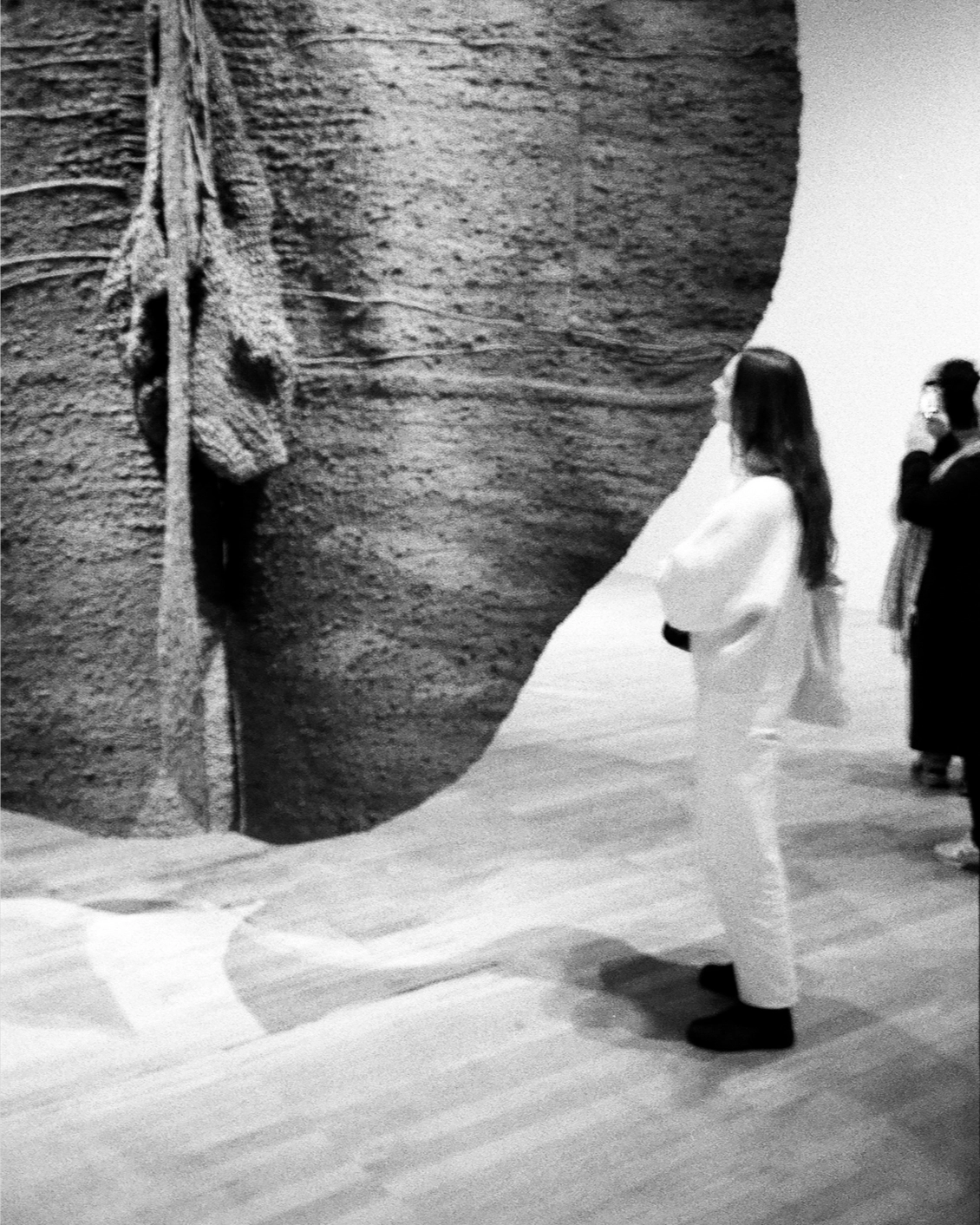
Magdalena Abakanowicz's sculpture at Tate Modern
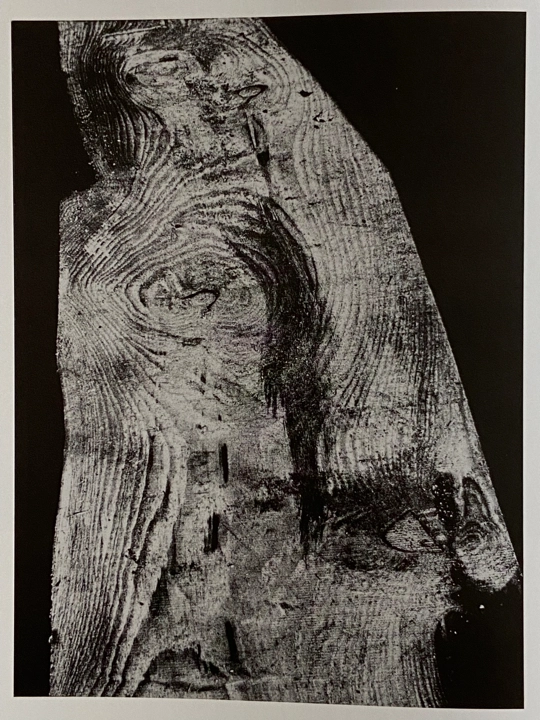
Abstract photography by Mario Giacomelli

Giacomelli's image from the "Terre Scritte" series
Agnieszka Owsiany

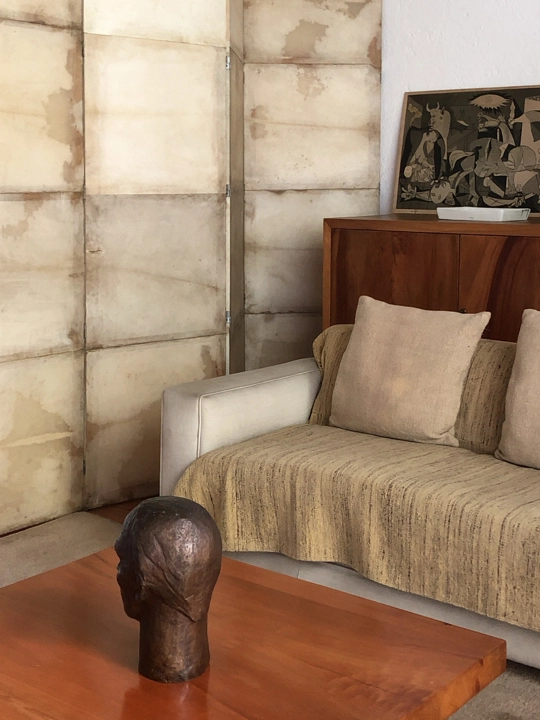
Luis Barragan's home and studio in Mexico City
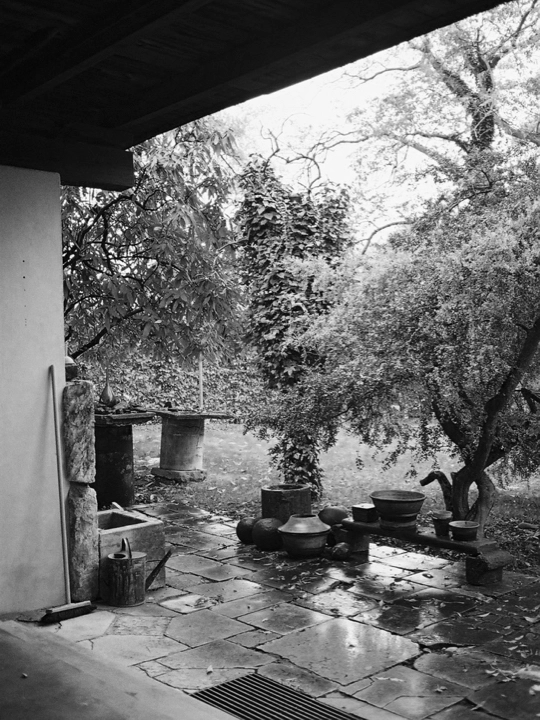
Sculptural garden at Villa Rothmayer in Prague